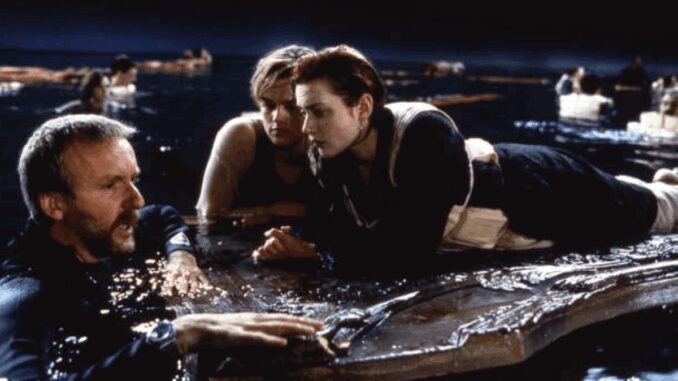
The Door, the Director, and the Debate: James Cameron and Leonardo DiCaprio Enter the Titanic Fray
The sinking of the Titanic is more than just a historical tragedy; it's a cultural touchstone, a story etched in our collective consciousness. And at the heart of James Cameron's epic film lies a debate almost as enduring as the wreck itself: could Jack have survived if he'd simply joined Rose on the floating door? For years, the question has fueled internet arguments, scientific investigations, and late-night talk show fodder. While Cameron himself has addressed the controversy periodically, a recent breaking of silence, featuring both him and Leonardo DiCaprio, has reignited the flames, revealing the complex interplay between artistic intention, scientific scrutiny, and the enduring power of a fictional tragedy.
The "door scene" (more accurately, a piece of salvaged wood paneling) is pivotal. As the icy water envelops the wreckage, Rose and Jack cling to the debris. Rose, with her upper body resting on the plank, is relatively sheltered from the freezing water. Jack, however, remains submerged, exposing himself to the lethal cold. The ensuing debate revolves around buoyancy, weight distribution, and the fundamental question of whether the piece of wood could have supported both characters. Critics argue vehemently that it could, citing various experiments and calculations. They claim Jack's demise was a needless contrivance, a melodramatic sacrifice dictated by the script rather than logic.
For Cameron, the argument has always been less about physics and more about narrative necessity. In past interviews, he has maintained that Jack's death was essential to the story's emotional impact. Rose's survival hinges on Jack's sacrifice, solidifying her character arc and providing a poignant closure to their brief but intense love affair. To change the ending, he argues, would be to fundamentally alter the meaning of the film.
The recent “breaking of silence,” whatever form it may have taken (a documentary, an interview, or even a playful skit), is significant because it signals a renewed engagement with this enduring debate. It suggests a willingness, perhaps even a playful one, to revisit the scene and its implications. Including DiCaprio, the actor who embodied Jack's tragic fate, adds another layer of intrigue. DiCaprio, famously reluctant to discuss "Titanic" in detail, represents the heart of the film's emotional core. His participation implies a deeper exploration of the scene's purpose and its impact on the audience.
The power of this debate lies in its intersection of the real and the imagined. On one hand, we have the devastating reality of the Titanic disaster, a historical event marked by immense loss and suffering. On the other, we have the fictionalized romance of Jack and Rose, a story that has captured the hearts of millions. The door debate, therefore, becomes a proxy for our anxieties about survival, sacrifice, and the inherent unfairness of fate.
Moreover, the argument underscores the tension between artistic license and scientific accuracy. Filmmakers, particularly those tackling historical subjects, often face the challenge of balancing fidelity to the truth with the demands of storytelling. Cameron's decision to prioritize emotional impact over strict adherence to physics has sparked controversy, but it also highlights the subjective nature of art. What is more important: historical accuracy or the creation of a compelling and emotionally resonant narrative?
Ultimately, the door debate transcends a simple question of buoyancy. It is a testament to the enduring power of "Titanic" as a cultural phenomenon. It illustrates how a single scene, a seemingly minor detail, can ignite passionate discussions and prompt audiences to grapple with profound questions about love, loss, and the nature of tragedy. The recent intervention by Cameron and DiCaprio, rather than settling the debate, is likely to further fuel the flames, ensuring that the question of the door, like the memory of the Titanic itself, will continue to linger in the collective imagination for years to come. They have, in essence, reminded us that sometimes, the most enduring questions are the ones that have no easy answers, and that the power of a story lies not just in its resolution, but in the questions it inspires.
